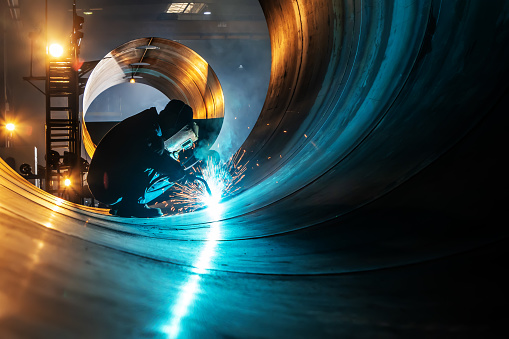
Structural steel mainly refers to any kind of steel that can be moulded & cut for use in large-scale buildings & communal structures, like factories, apartment buildings & skyscrapers. This steel, which is manufactured from increased iron & carbon compound alloy, is widely used in I-Beam support frames, as well as bolt and plate joints. Structural steel fabrication is one of the modern engineering applications that is used in a number of industries including construction plants. Here are five reasons to choose structural steel in construction.
Flexibility
Buildings and other complicated mega-structures like rollercoasters require solid support frames of structural steel as it is flexible, moldable, and measurable in nature. One of the biggest advantages of working with molten steel over other materials is that it can be bent or curved to fulfil architectural requirements. Welding consultants and designerd working with steel can express themselves more freely than those working simply with polycarbonates, bricks, plate glass, or masonry.
Easy assembly and prefabrication
Thanks to computer-aided design (CAD), steel frames can now be broken into smaller, transportable components, allowing for faster on-site installation. Prefabricated structural steel may be quickly rebuilt and removed as needed by qualified steelworkers due to its ability to be linked through boltholes and interlocking joints. Plate connecting eliminates the need for complicated and time-consuming welding, cutting the cost of structural steel as a building material.
Sheer Strength
Steel framing is significantly more durable than traditional brick and mortar construction. Structural steel’s massive lifting capabilities make it an excellent choice for larger, more costly structures. Steel framing also enables the addition of many more stories to space-intensive structures, such as office complexes, in a timely and safe manner.
Durability
Buildings made of structural steel are extremely resistant to the elements. Structural steel is both easy to maintain and reliable, with an anticipated lifespan of well over a century and an extraordinary hardness unmatched by older materials such as wood. Rust, mildew, shrinkage, rot, warping and insect damage are all resistant to steel. It can be rust-proofed for outdoor and exterior use if necessary.
Cost-effectiveness
Last but not the least, the toughness and extended life of structural steel are that it may reduce both original and ongoing construction costs. Structural steel is an ‘install and forgets’ material that requires little more financial or physical upkeep once it is in place.
From high-rise buildings to bridges, the necessity for structural steel is huge. The entire fabrication process requires specialized skills, knowledge, and resources to finish successfully with accuracy.

